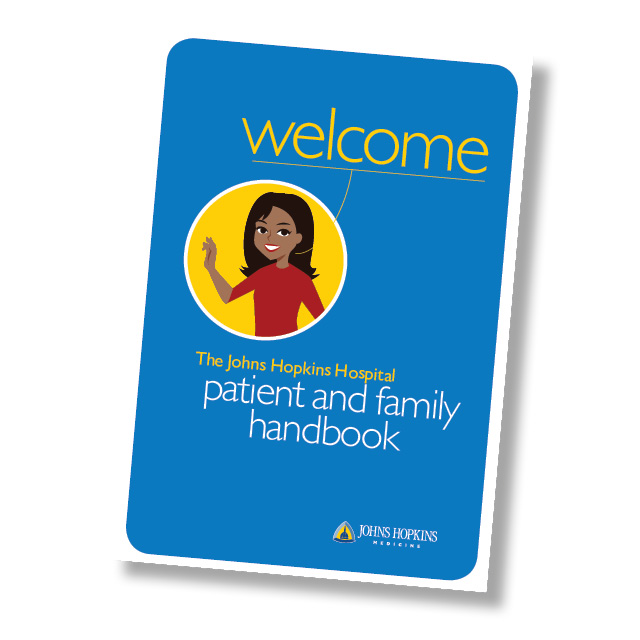It all began with a search for information. Podge Reed, an inpatient and member of the Johns Hopkins Hospital Patient and Family Advisory Council, was pondering the procedure for filing a patient complaint. He scoured the hospital’s patient handbook for the answer—once, twice, thrice. Only then, “sandwiched between a paragraph on ethics and a paragraph on the chaplain’s office,” Reed found the answer. Needless to say, the information “didn’t jump out at you,” Reed says.
He went on to read the handbook, take notes and make recommendations for improvement to Jane Hill, the hospital’s patient relations director. “I felt that as a member of the advisory council, I had the responsibility to look at things to see if there was a better way to do them,” Reed says. An updated handbook had long been an aspiration for leadership in patient- and family centered care. Hill urged Reed to keep going. “He could put himself in the shoes of a patient to help us steer this,” she says.
Reed, a lung transplant patient with several extended stays in the hospital, teamed up with Johns Hopkins senior writer Judith Minkove, who is also an advisory council member, to rewrite the handbook. The result is a visually engaging introduction to Johns Hopkins that invites patients and their families to become active participants in the care process. The Johns Hopkins Hospital Patient and Family Handbook debuted early this month and is now a staple in patient rooms.
From the start, Reed and Minkove, aided by other patient relations and Service Excellence staff and council members, focused on ranking, organizing and simplifying information, whether it had to do with patients’ rooms, visiting hours, Wi-Fi, meals or other essential aspects of a hospital stay. In the front of the handbook, readers will find a list of the six most important things patients and families need to know about their hospital stay and where to find further information.
The guide boils down a massive amount of material into a series of easy-to-digest lists, diagrams and paragraphs. There’s a central phone directory, an illustrated guide to a typical hospital room, instructions on preventing infections and falls, and a briefing on pain management.
Also included in the handbook are the protocol for bedside shift reports, a road map for understanding medications and a reminder for patients to stay active. A chart describes each member of a patient’s care team and the color of his or her scrubs. Patients who may feel overwhelmed are urged to seek advice from their nurse manager. A list of rights and responsibilities spells out the role played by patients and their families during their hospital stay and at discharge.
Colorful graphics and clear print make the handbook easy to read. Guiding patients and family members through the handbook is Emilia, a welcoming character that personalizes the handbook and lends continuity to a range of different topics. An online version and a Spanish-language version are also planned.
Says Reed: “My hope is that this handbook will be a really positive benefit for Johns Hopkins Hospital patients and that they’ll actually use it. Until I went through the old handbook that first time, I didn’t pay any attention to it.”

